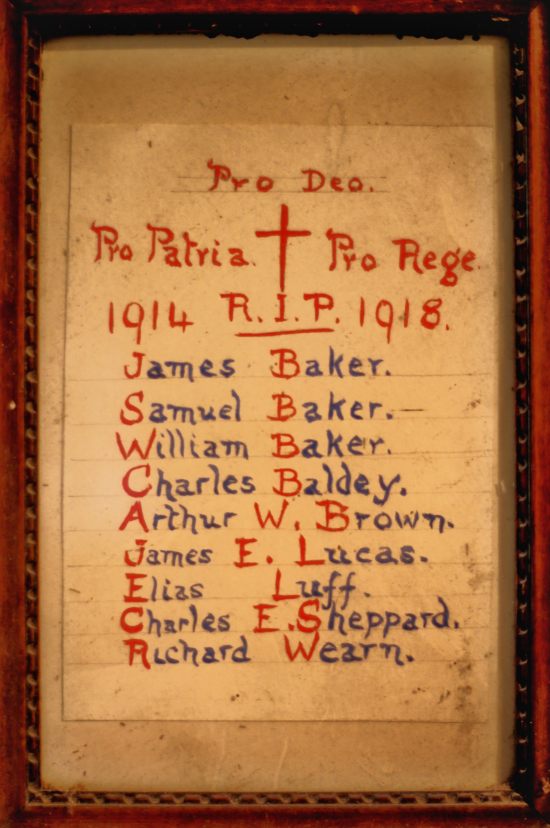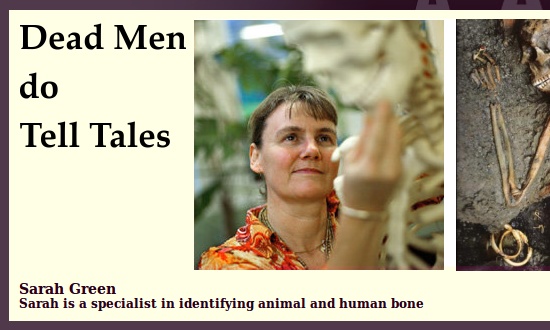
Trevor Beattie, the Chief Executive of the South Downs National Park Authority, will be speaking at St. Peter’s Church Henfield at 5:30pm on Saturday 27th February. Admission is free but donations to Family Support Work will be welcomed. It seems safe to assume that Mr. Beattie will not be using PowerPoint for his presentation.
Category Archives: Local History
Carol Singing

Join Tricia for carol singing around the village, or to listen at home. Everyone is welcome, of all ages. We start at 5 pm at Tricia’s house, 37, Clappers Lane and finish at the Shepherd and Dog. With mulled wine & mince pies (no need to bring harmoniums, bonnets or top hats).
1937 Burgess Hill Water Act
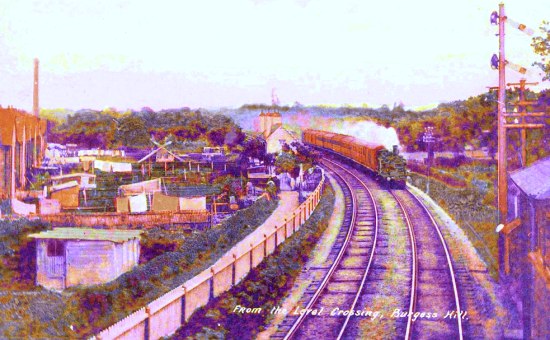
The following letter has just appeared in the current issue of Poynings News. Since water was pumped from Fulking as well as Poynings, it seems rather likely that exactly the same legal and financial considerations apply to those with water sources on their land in Fulking.
In the 1930s the Burgess Hill Water Company began abstracting water from the natural chalk downs aquifer in Poynings, pumping millions of gallons from boreholes and sending water to the rapidly expanding town of Burgess Hill. The result was that the water table dropped and many farms and other properties in the area found that their wells and springs which had provided water for centuries dried up. The Crown Estates successfully promoted an Act of Parliament which required the Burgess Hill Water Company (and its successors) to provide piped water to the affected properties. Each property was allocated an annual “allowance”, roughly equal to the volume of water previously obtained from wells and springs. Over and above the water allowance the water used was to be charged for. Since 1992 the water in the South East is supplied by South East Water, an Australian and Canadian owned Investment Trust Company, which has progressively taken over several local water undertakings. South East Water is now seeking to renege on its legal obligations to provide an allowance of water without charge. If your property is subject to the above Act you could see your water bill massively increase over the next year or so. My property’s annual water bill is set to rise from a few hundreds of pounds to over £10,000. I am not surprisingly contesting this. I strongly suggest that if your property is affected that you contact me with a view to taking concerted action.
Michael Crowther: Poynings Grange Farm, Henfield Road, Poynings BN45 7AW
07802 201 854 mcrowther@crowtherassociates.co.uk
Images of War: 1914-1918
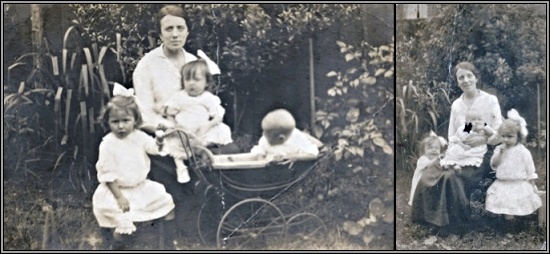
A talk by Jayne Shrimpton to the Henfield History Group at 8:00pm on Tuesday 10th November in the Free Church Hall in Henfield. The speaker is a professional dress historian and ‘photo detective’ who has published half a dozen books and published numerous articles. Her talk will focus on civilian and military photos taken during WWI. The photos above show Jayne Shrimpton’s grandmother, father, and aunts in 1917
A Downland Celebration
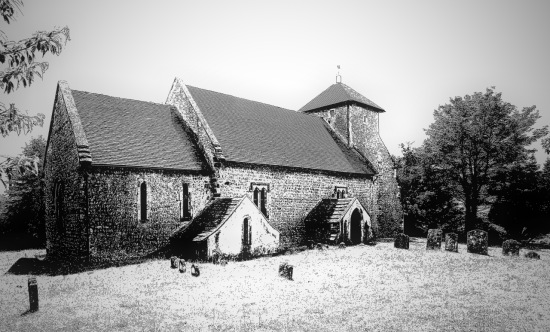
Pyecombe Church, 6:00pm–9:00pm on Saturday 14th November. Enjoy local Sussex wine from Ditchling’s Court Garden Vineyard, with cheese, bread and nibbles. Hear historic tales about Pyecombe’s past, links with Lewes Priory and with local villages along the South Downs Way. Be entertained with music from the Pyecombe Choir and other local musicians.
Tickets £7.50 per adult (includes first glass of wine and snacks), under 14s free. For tickets in advance, contact Karen Lewis 01273 857013 or email karenalew1@aol.com.
Local history: making it up
The Guardian published a long report at the end of September about the excavation of a “Hurricane fighter near Beachy Head”. Apparently, “a young Polish pilot crashed into the hills near Beachy Head”. There’s even a photo with the caption “The excavation site near Beachy Head”. This is twaddle — Sergeant Wünsche’s Hurricane came down in a field near Saddlescombe and, unsurprisingly, that is where the recent excavation took place.
The Polish Ministry of Foreign Affairs also carries a report. They get the location right (“near Saddlescombe Farm in West Sussex”) but their characterisation of the archaeology is, at best, misleading: “A team of archaeologists and historians .. have discovered the remains of No. 303 Polish Fighter Squadron’s Hurricane. The find was made exactly 75 years after the fighter plane crashed .. on 9 September 1940″ [our emphasis]. In fact, “a major recovery of this crash site was undertaken by the Wealden Aviation Archaeology Group in September 1979. The remains of a shattered Rolls-Royce Merlin engine, propeller hub, head armour and cockpit components including the gun sight were all unearthed” [source]. To its credit, the Guardian article at least notes that “the crash site had been located nearly 40 years ago by amateur archaeologists”.
Sergeant Wünsche survived and returned to combat in 1941. He died in Warsaw in 1980 nearly a year after the original discovery of his Hurricane.
Selina of Sussex 1818-1886

The author Leonard Holder is to visit Fulking on the afternoon of Thursday 29th October and will speak at 2:30pm in the Village Hall about his novel and the local history that underlies it. The heroine of the book is the eponymous Selina Page from whom the author is descended. Selina was the châtelaine of Perching Manor, and the Page family ran Perching Manor Farm from 1857 until 1920 when the Harris family took over.
From the Sussex Ox to the First Tractor
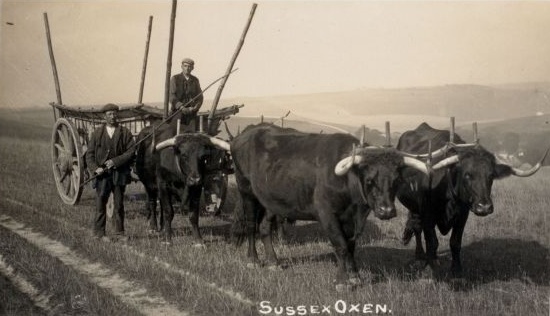
Ian Everest talks to the Beeding & Bramber Local History Society on Wednesday October 7th at 7:45pm in the Village Hall, Upper Beeding.
Oxen were still in use at Chyngton and Exceat Farms in Seaford until the mid-1920s and were reckoned to have been in use on the Sussex Downs for over one thousand years before. The talk includes photographs of them at work in Seaford, Bishopstone, East Dean and Lewes, together with some of the more unusual non-agricultural work that they were used for. Following the demise of the oxen in Sussex, the talk looks at the evolution of farming to horses and steam power, the rioting when the threshing machines were introduced and the arrival of the first tractors.
[GJMG notes: I attended a different talk by this speaker in Henfield a couple of years ago. It remains the best local history talk I have heard. Ian Everest was brought up on one of the farms he discusses and he really knows his stuff. In addition, he is an excellent speaker with well organized material.]

